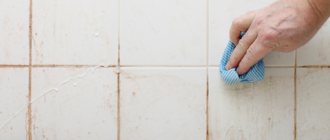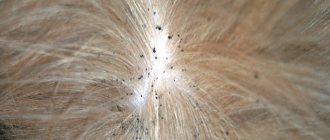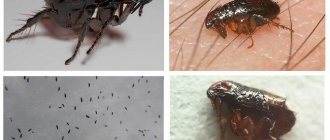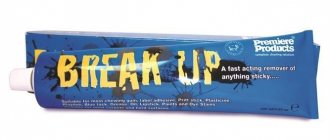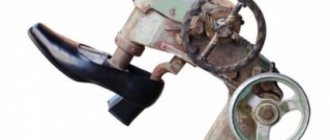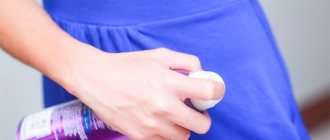Contrary to popular belief, domestic dogs suffer from flea bites not much less often than their stray counterparts. And if the latter can only adapt, the pet owner should not delay the decision on how to rid the dog of fleas. Indeed, in addition to discomfort, such a “neighborhood” provokes allergies and dermatitis in the animal, causes helminthic infestations, anemia, and exhaustion.
Often, getting rid of fleas is not an easy task even for an “experienced” owner: choosing a suitable, safe and effective method of combating the parasite requires a lot of trial and error. But the main thing to start with is to make sure there is a problem.
What to do if you find fleas
If you find even one flea on your dog, you need to act as follows.
Life cycle of fleas
- Do not delay treatment - fleas multiply at high speed. It will only take a few days for the pet to stop sleeping and eating, and for the insects to penetrate into all surrounding objects. It will be much more difficult to get them out of there than with a dog. In addition, in this case, there remains a high risk of re-invasion.
- Take a comprehensive approach to eliminating parasites. In addition to the pet, you will have to treat the room in which he lives (in the case of the street, this is an enclosure, a booth, everything that is in them). To ensure that you get rid of bloodsuckers, you will need to use not only folk, but also industrial pest control products.
- The drug for treating your four-legged friend must be selected in accordance with its characteristics, for example, age, attitude to washing, and state of health. Ideally, you should consult a veterinarian, but advice from people who have already encountered such a situation and successfully overcome it is also acceptable.
- During the period of disinfestation measures, the dog must be in “quarantine” - it is worth limiting it from free walking and communication with unfamiliar relatives.
Signs of infection
Often, owners notice fleas when there are already a lot of them and they become dangerous to health. To prevent this, you should closely monitor your dog. If you observe the following changes in behavior, you need to think about possible infection:
- Restless sleep, constant change of rest area.
- Sudden jumping up in a calm state.
- Frequent arching of the back, freezing in this position for several seconds.
- The clicking of teeth as the pet gnaws on the skin.
- Severe itching – your pet itches quickly and intensely, which differs from standard scratching.
If one or more symptoms are present, your dog's skin should be examined. If there are inflamed areas and dried blood, this indicates infection.
If you are prone to allergic reactions or skin sensitivity, red rashes may form. They are usually found on the stomach, in the inner thighs, behind the ears, and on the withers. If a dog is allergic to bites, there is severe watery eyes in the corners of the eyes and hair loss. Pus gradually appears on the bites.
In a severe form of the disease, the pet has noticeable bald spots at the base of the tail, on the croup, and withers. Without timely medical intervention, complete hair loss and death due to re-infection may occur.
Industrial means for removing fleas
At the moment, there is a huge range of products that can be used to remove fleas from a dog. However, for all their effectiveness, each of them has only a temporary effect, because these parasites are widespread everywhere. As soon as the treatment ends, the flea may appear again. Therefore, you need to know what you can do to prevent an invasion, how to quickly get rid of insects, and how to maintain the result in the future.
Shampoos
Washing the dog
Shampoos help remove fleas from dogs only if there are a minimum number of them; as the insects multiply, this type of treatment completely loses its effectiveness. Products containing insecticides, such as permethrin, help get rid of parasites. However, this component can cause an allergic reaction, the signs of which are: excessive salivation and vomiting.
There are also products for disinfestation of dogs with natural ingredients. Plant extracts have an antipruritic, anti-inflammatory, healing effect, and keep your pet's hair in a healthy condition. After applying flea shampoo to the dog, carefully distribute it over the body (avoiding contact with the eyes, nose and mouth), leave for a while (according to the instructions), and rinse. After drying, it is recommended to comb the dog with a fine-toothed comb.
Among the most popular shampoos for fleas on dogs are: Mr. Bruno, Bars, Phytoelite.
Flea shampoo Mr. Bruno
Shampoo Bars for fleas
Shampoo Phytoelite for fleas
Drops
Applying flea drops
You can quickly get rid of blood-sucking parasites from your four-legged friend at home using drops. This option is more effective than the previous one, and therefore enjoys deserved popularity. The effect of the contents of the bottle lasts for about a month (provided that the instructions are followed).
The drops are applied to the dog’s skin in a place that is inaccessible to licking (most often the scruff of the neck). The active ingredient is toxic to bloodsuckers; it penetrates the animal's epidermis and bloodstream, resulting in the elimination of insects. However, before removing fleas from a dog with drops, you need to consult a veterinarian, since the active ingredients have side effects and contraindications.
Among the drops we can note: Bars Forte, Celandine, Barrier, Frontline.
Bars Forte
Celandine
Collar
Using a collar to remove fleas from a dog, although convenient, presents certain difficulties.
This method is not suitable for puppy-aged pets, expecting dogs or nursing dogs, since the insecticides with which the collar is impregnated can have a negative effect on the puppies' body. Collars containing natural substances, as well as ultrasonic ones, are safer. At the same time, the latter option is too expensive, and natural ingredients are not effective against heavy flea infestations. Another drawback of flea collars is that poisonous compounds are distributed unevenly throughout the body. In addition, the product is not recommended to be used simultaneously with other methods.
Sprays
Flea spray for dogs
You can remove fleas from your dog using a spray. This form of processing has gained popularity due to its ease. It is enough to apply the product to the fur in the pet’s neck area, after which the parasites will remain on the animal for at least 3-4 weeks.
The disadvantage of using a spray to combat fleas is the high content of toxic substances in the composition. The contraindications are the same as for the collar. There is also a possibility of licking off the drug if it gets on other parts of the body.
Frontline is considered the most effective tool in this group; Bars and Beafar aerosols are no less popular among dog breeders.
Powder
An insecticidal remedy for fleas on dogs in powder form has not found significant distribution among dog breeders. This is due to the need to rub the product with your hands into the skin and hair of the animal. In addition, the use of this processing method increases the risk of poisoning. Powders are not used when it comes to puppies, pregnant dogs, lactating dogs and weakened ones.
Among the powdered preparations we can highlight: Sanal, Insectal.
Pills
The tablet form of flea control also did not catch on among dog owners. Chewable tablets slightly reduce the number of parasites, but do not remove them completely. In addition, this method of disinsection is dangerous due to poisoning and allergies. Treatment consists of adding the drug to the animal’s feed.
Veterinary pharmacies offer drugs such as Comforts, Capstar.
Folk remedies for fleas on dogs
An alternative to industrial drugs is to remove fleas from dogs using folk remedies. They are generally effective if insects are present in small numbers. However, as a preventive and auxiliary remedy, folk methods are irreplaceable.
Flea head under a microscope
- Herbs. The most popular and effective plants that can repel fleas are: wormwood, tansy, eucalyptus, hellebore. The last option is sold in pharmacies and is the most powerful remedy; its use requires caution, since exceeding the recommended dose threatens severe intoxication of the animal’s body. Decoctions or infusions are prepared from the plants and used to bathe the dog. Using herbs is an excellent and safe way to get rid of fleas in puppies.
- Laundry soap. To rid your pet of blood-sucking insects, you need to make a solution from laundry soap. To do this, eucalyptus leaves are boiled in a separate container in advance. After cooling, add a little cedar (fir, pine, tea tree) oil and grated soap. The resulting liquid is used to wash the dog. It can be stored at room temperature.
- Garlic. Fleas cannot stand the smell of garlic, but during treatment you need to carefully monitor your pet - for dogs, this plant poses a danger (even death) if ingested. To prepare a medicinal solution, grind 2-3 cloves, add 200 ml of water, and leave overnight. The resulting liquid can be applied only to those areas of the body that the animal cannot lick.
- Onion. It works the same way as garlic. To treat a pet, finely chop the head, fill it with water, and add soap (preferably tar or laundry soap). After stirring, treat the animal’s fur with the solution.
- Apple vinegar. To get rid of bloodsuckers, generously moisten the dog’s body with an aqueous solution of apple cider vinegar and leave for 60 minutes, then rinse off and comb the hair well. To prepare, you will need one part vinegar and three parts water.
- Essential oils. Fleas are afraid of any strong odors, especially citrus, eucalyptus, pine, and tea tree esters. Oils are recommended for direct application to the dog's coat or adding to bathing water.
How and for what reasons can a pet become infected?
Some dog owners believe that their pet is insured against this disease. But even dogs that go to the toilet at home can become infected. Fleas get on the skin for the following reasons:
- Through sick animals. If a stray dog itches, constantly and strongly bites itself, gnawing into its fur, this indicates the presence of parasites in the yard dog. After contact with an animal, it is important to carefully examine the pet at home.
- From the grass. If an animal has a lot of parasites, then some may remain on the ground where it walked. They wait a long time for the next victim, climbing onto the grass. The jumping height of insects is 30-33 cm, length – up to 20 cm. Therefore, they easily move onto the dog’s fur.
- Through larvae. They are no less dangerous than adult insects. The larvae fall to the fur of a sick animal on the road, ground, grass, and leaves. Flea eggs often enter the house by sticking to shoes or pants. This is a risk even for pets that are rarely walked.
Therefore, the risk of infection remains in any dog, regardless of the frequency of their stay on the street. Even after successful treatment, infection can occur again, because the insects themselves, their pupae and eggs remain on the pet’s personal belongings. They get on the carpet and furniture. Every item that a sick pet has come into contact with must be cleaned and disinfected.
How to remove fleas from puppies
It is more difficult to remove fleas from dogs of puppy age than from adults, since most of the products on the market are indicated for six months. Only a few drugs are approved for use:
- from 1.5 months - Bars and Stronghold in spray form, Celandine and Phytoelite shampoos;
- from 2 months – Celandine and Frontline in the form of drops, Beafar collar.
Before using these medications, you need to study the instructions to find out how to properly kill fleas and prevent poisoning of the puppy.
Note: the best option for puppies would be to use folk methods and remedies: tar soap, wormwood.
Is there a flea vaccination?
Flea spray for dogs
Many owners would like to have their pet vaccinated against fleas. As such, there is no flea vaccine. However, grafting is often referred to as insecticide injection. The injection acts like drops, but the effect can last up to six months. The mechanism of action of the vaccination is as follows: when bitten by an insect, it receives a dose of a toxic substance that causes a disturbance in the parasite’s nervous system, and then its death.
The positive aspects of flea injections for dogs include the simplicity of the method. To protect your pet from bloodsuckers, only a single injection is required. In addition, the possibility of the drug entering the animal’s gastrointestinal tract is completely eliminated, which means there is no risk of poisoning. An additional advantage is that the product is available in different versions, providing for the treatment of dogs of different ages and colors.
Not all dogs can receive flea injections. Injections are contraindicated for puppies under 2 months of age, weak pets, and people with allergies. You cannot vaccinate yourself - this must be done by a veterinarian after a preliminary examination of the dog. The most commonly used anti-flea vaccinations are: Lufenuron, Eprimek, Ivermectin.
Treating the area where the dog lives
To remove fleas from a dog, it is not enough to treat only the pet. The insects living next to it will return to the “host” as soon as the drug expires. Therefore, it is necessary to simultaneously carry out a thorough disinfestation of the premises (apartment, house, booth) in which the pet lives.
Treating your apartment for dog fleas
There are several ways to disinfect an apartment. You can use one, the most suitable one, or you can use several at once.
What do fleas look like on a dog?
- Thermal impact. If the temperature outside is sub-zero, it is enough to take the things in which fleas have settled outside for a few hours outside. Insects can also be killed by exposing them to boiling water (by dousing or boiling them).
- Chemical attack. Products such as Karbofos, Reid, Fenaxin and the like are used to treat floors, walls, corners, utility rooms, and large interior items (for example, upholstered furniture). You can use insecticidal preparations in the form of a spray or powder that were used to treat the dog. It is important that there is not a single untreated corner left, otherwise the processing will have to start all over again.
- Traditional methods. Among the folk methods for treating an apartment from dog fleas, the same means are used as for disinsection of a pet. These are: wormwood, kerosene, pine sawdust and others. Only kerosene treatment leads to the death of insects; other methods can be used as a complement to the chemical option. Infusions and decoctions are prepared from the plants, which are used to wipe all surfaces in the house, preferably several times a day. As an option, spread fresh wormwood around the apartment (along the baseboard, in corners, under furniture), and change it as it dries for a month (minimum).
- The professional way. The services of special services for exterminating fleas indoors are sought in difficult situations, when other methods are ineffective. The essence of professional treatment is the artificial creation of fine vapor particles containing an insecticide. These particles settle on surfaces, penetrating deep into porous materials, causing the death of insects.
Processing the dog house
When removing fleas from a dog, you also need to put things in order in the kennel. To destroy insects, the same methods and preparations are used as in the apartment. The litter must be burned, and to prevent the return of bloodsuckers, branches of wormwood or tansy should be laid out inside and around the booth (they should be periodically replaced with fresh ones).
Safety rules for processing
Since killing fleas on dogs and indoors involves the use of highly toxic chemicals, precautions must be taken.
- Do not use drugs and products that have expired;
- carefully read the instructions for using a particular product, especially when it comes to treating puppies, weakened and pregnant animals;
- if it is not possible to contact a specialist, when choosing a drug, pay attention to the dosages indicated in the instructions, the characteristics of the animal’s age, and recommendations for further observation;
- if your pet becomes ill during the procedure, you need to urgently take him to the clinic or call a specialist at home;
- Before you start disinfesting the premises with chemicals, you need to remove all household members, including pets;
- Processing should be carried out using rubber gloves and a respirator (or medical mask);
- After the disinfestation is completed, you must leave the apartment, wash your face and wash your hands.
You can return to the treated room after the period specified in the instructions for the product used.
Features of treatment of puppies and pregnant dogs
If treatment is necessary, it is important to discuss the matter with your veterinarian. Independent choice can lead to irreparable consequences. Naturally, all recommendations for use must be followed; puppies under 2 weeks of age are not allowed to be treated.
Low concentration external drops are best suited for treating puppies and pregnant females. The dog can be treated 7-10 days before giving birth. Do not use pills or collars. Shampoo will have the mildest effect.
Fleas are a common problem for all dogs. It is impossible to protect yourself from them; it is difficult to prevent infection. Even the use of barrier drugs does not reduce the potential threat. It is important to notice parasites in time and prescribe comprehensive treatment.
5 / 5 ( 1 voice )
Flea prevention
It is almost impossible to prevent fleas from appearing on your dog, but you can significantly reduce the likelihood of parasite infection. To do this, you need to follow a number of recommendations:
- when going for a walk, wear a flea collar;
- use medications approved for prophylaxis (for example, injections);
- regularly treat the place where the pet lives, its bedding, with appropriate pest control agents;
- avoid contact between your pet and unfamiliar relatives;
- keep the dog clean, monitor the condition of the coat;
- do not walk in places known to be inhabited by fleas (basements, abandoned areas).
What means to remove fleas from a dog is up to each owner to decide according to his or her capabilities. The main thing is to notice the problem in a timely manner and prevent the proliferation of insects.
Reviews
All this is very tedious, you need to tinker. And even neutralize the house if the dog has fleas! At first I fought with all the means I could, but they still appear from somewhere. I had to spend money on ivermectin - it is injected intramuscularly. Everything has been fine with my Gadget for several months now!
Our dog doesn't like collars. Always trying to take them off, naughty. We also tried aerosols, but then the whole apartment stank. He is allergic to pine needles, but wormwood helped. Only we didn’t just wash the floors with it, but scattered the dried stuff in the corners. No further processing is needed. Sometimes we still drip, but that's just how it is
